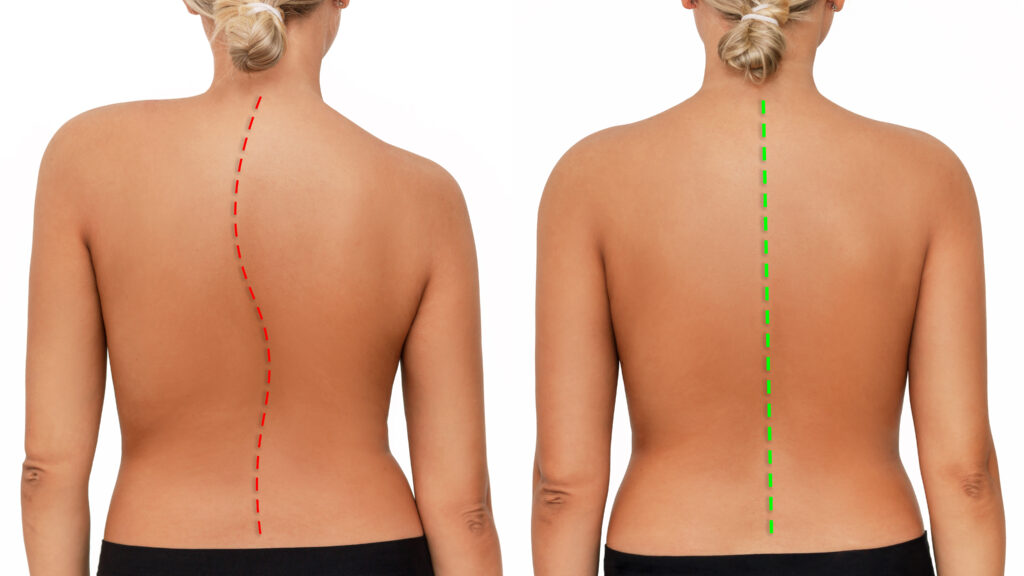If you've ever experienced a tension headache, you know how debilitating it can be. Chiropractors offer a range of effective treatments that not only address the symptoms but also target the underlying causes. By focusing on spinal adjustments, massage therapy, and other techniques, they help restore balance to your body. You might be surprised at how simple lifestyle changes, like posture correction or stress management, can make a significant difference. Curious about the specific methods that can give you relief? Let's explore the seven best ways chiropractors tackle tension headaches.
Spinal Adjustments
Many people find that spinal adjustments can be a game-changer for managing tension headaches. When you experience tension headaches, it's often due to muscle tightness and misalignments in your spine. A chiropractor can identify these issues and perform adjustments to realign your spine, which may help relieve the pressure that's contributing to your headaches.
During your visit, the chiropractor will assess your posture and range of motion. They'll look for areas of tension or misalignment that could be causing discomfort. Once they've pinpointed the problem areas, they'll use specific techniques to adjust your spine.
These adjustments can enhance blood flow and nerve function, promoting overall health and potentially reducing headache frequency and intensity. You might be surprised at how quickly you feel relief after an adjustment. Many patients report a significant decrease in headache symptoms, often within just a few sessions.
Regular adjustments can help maintain spinal alignment and prevent the recurrence of tension headaches. Additionally, a chiropractor may suggest exercises or lifestyle changes that can support your spine and reduce tension.
Massage Therapy
Massage therapy can play an essential role in relieving tension headaches by using techniques focused on muscle release.
As the therapist works on tight areas, you'll likely notice improved blood circulation, which can further ease discomfort.
Understanding these benefits helps you appreciate how massage complements chiropractic care.
Techniques for Muscle Release
When you're dealing with tension headaches, finding relief can feel like an uphill battle. One effective approach chiropractors often use is muscle release techniques through massage therapy. These techniques target the tight muscles in your neck, shoulders, and upper back, which can contribute to headache pain.
You might find deep tissue massage particularly beneficial. It focuses on the deeper layers of muscle and connective tissue, helping to break up knots and alleviate tension. Your chiropractor may also use trigger point therapy, where they apply pressure to specific points to relieve the tightness that radiates pain.
Another effective technique is myofascial release, which targets the fascia—the connective tissue surrounding your muscles. By gently stretching and applying pressure to the fascia, you can release tension that's contributing to your headaches.
Incorporating these muscle release techniques into your treatment plan can considerably reduce the frequency and intensity of your tension headaches.
You'll likely leave your session feeling more relaxed and with a clearer mind. So, don't hesitate to discuss these options with your chiropractor the next time you seek relief from tension headaches.
Enhancing Blood Circulation
Improving blood circulation plays a significant role in alleviating tension headaches. When blood flow increases, it delivers essential nutrients and oxygen to your brain, helping to relieve that nagging pressure.
Massage therapy is an effective way to boost circulation, especially when targeting the neck, shoulders, and upper back. These areas often hold tension that can lead to headaches.
During a massage, the therapist applies pressure that encourages blood flow, loosens tight muscles, and reduces stress. You might notice immediate relief as the massage helps break up muscle knots and improves overall circulation.
Techniques like kneading and tapping can also stimulate your body's natural healing processes, enhancing your overall well-being.
Incorporating regular massage therapy into your routine can help prevent future tension headaches by maintaining healthy blood circulation. You'll not only feel more relaxed, but you may also find that your headaches become less frequent and less intense.
Posture Correction
When it comes to tension headaches, correcting your posture can make a big difference.
You can benefit from ergonomic workplace adjustments and spinal alignment techniques that promote better body mechanics.
Ergonomic Workplace Adjustments
Creating an ergonomic workspace is essential for reducing tension headaches linked to poor posture. When you set up your work environment properly, you can minimize strain on your muscles and joints, leading to a more comfortable day.
Start by ensuring your chair provides adequate lumbar support. Your feet should rest flat on the ground, with your knees at a 90-degree angle.
Next, adjust your computer monitor so that the top of the screen is at eye level. This way, you won't have to lean forward or tilt your head, which can strain your neck and shoulders. Keep your keyboard and mouse close, allowing your elbows to stay at your sides and bent at roughly 90 degrees.
Moreover, take regular breaks to stand, stretch, and move around. This simple act can help alleviate tension that builds up from prolonged periods of sitting.
You might also consider using a standing desk or a desk converter to change your position throughout the day. By implementing these ergonomic adjustments, you'll create a healthier workspace that not only enhances productivity but also reduces the likelihood of tension headaches.
Spinal Alignment Techniques
How can spinal alignment techniques help alleviate tension headaches? These techniques focus on correcting your posture and realigning your spine, which can greatly reduce the frequency and intensity of your headaches.
When your spine is misaligned, it places stress on your muscles, nerves, and joints, leading to tension that often manifests as headaches. Chiropractors use specific adjustments to restore proper alignment and relieve pressure in your neck and upper back.
By improving your spinal alignment, you can enhance blood flow and reduce muscle tension, which are key factors in headache relief. You might notice that as your posture improves, the tension in your shoulders and neck decreases, leading to fewer headaches.
Incorporating exercises and stretches that promote good posture can also play an essential role. A chiropractor may recommend specific movements that strengthen your core and back muscles, helping you maintain an aligned spine throughout your daily activities.
Stretching Exercises
Stretching exercises play an essential role in alleviating tension headaches, as they help release tight muscles and improve circulation. When you incorporate a regular stretching routine, you not only ease muscle tension but also promote relaxation. This can be particularly beneficial if you spend long hours at a desk or engage in repetitive motions that strain your neck and shoulders.
Start with simple neck stretches. Gently tilt your head to one side, bringing your ear toward your shoulder. Hold for 15-30 seconds, then switch sides. Next, try shoulder shrugs. Raise your shoulders toward your ears, hold for a moment, then release them down. Repeat this several times to relieve any built-up tension.
Another effective stretch is the upper back stretch. Clasp your hands together and extend your arms in front of you, rounding your upper back. Hold this position for 15-30 seconds, feeling the stretch between your shoulder blades.
You can also try a seated twist; while sitting, place one hand on the back of your chair and gently twist your upper body to one side. Hold for a few breaths, then switch sides.
Incorporating these stretching exercises into your daily routine can greatly reduce the frequency and intensity of your tension headaches. Remember to listen to your body—if something feels uncomfortable, ease off.
With consistency, you'll likely find a noticeable improvement in your overall well-being and headache relief.
Heat and Cold Therapy
After incorporating stretching exercises into your routine, you might find that adding heat and cold therapy can further enhance your relief from tension headaches. These therapies work by targeting muscle tightness and inflammation, which are often root causes of your discomfort.
Heat therapy can be particularly soothing. Applying a warm compress or heating pad to the neck and shoulders helps increase blood flow, relaxes tense muscles, and provides a calming effect.
On the other hand, cold therapy can help reduce inflammation and numb sharp pain. A cold pack or bag of ice wrapped in a towel can offer significant relief when applied to the forehead or temples.
Here are some benefits of using heat and cold therapy for tension headaches:
- Increased relaxation: Heat encourages overall muscle relaxation, easing tension.
- Reduced inflammation: Cold therapy minimizes swelling and numbs discomfort.
- Improved circulation: Heat boosts blood flow, promoting healing and relief.
- Customizable treatment: You can easily adjust the temperature and duration to suit your needs.
To effectively use these therapies, experiment with alternating between heat and cold to see which combination works best for you.
Make sure to use a barrier, like a cloth, to avoid skin damage, and limit application times to about 15-20 minutes.
Nutritional Guidance
To effectively manage tension headaches, you should consider the role of nutrition in your overall wellness. A balanced diet can play a significant part in reducing headache frequency and intensity.
Begin by focusing on hydration; dehydration is a common trigger for headaches. Aim to drink plenty of water throughout the day to keep your body well-hydrated.
Next, pay attention to your intake of magnesium-rich foods. Studies suggest that magnesium deficiency can contribute to headaches. Incorporate foods like spinach, nuts, seeds, and whole grains into your meals.
Omega-3 fatty acids, found in fish like salmon and walnuts, can also help reduce inflammation and may alleviate headache symptoms.
Don't overlook the importance of regular meal timing. Skipping meals can lead to fluctuations in blood sugar levels, which might trigger tension headaches. Try to eat at consistent times each day and include a variety of nutrients in your meals.
Opt for whole foods over processed options; artificial additives and preservatives can sometimes exacerbate headache issues.
Finally, consider keeping a food diary. Tracking what you eat can help you identify any specific foods that may trigger your tension headaches. If you notice patterns, discussing these with your chiropractor can lead to tailored nutritional advice that suits your needs.
Stress Management Techniques
Recognizing the impact of stress on tension headaches is essential for effective management. When you experience stress, your muscles tighten, and that tension can lead to headaches.
Implementing stress management techniques can considerably reduce the frequency and severity of your headaches. Here are a few strategies you can incorporate into your daily routine:
- Mindfulness Meditation: This practice helps you focus on the present moment, reducing anxiety and tension. Just a few minutes a day can make a difference.
- Deep Breathing Exercises: Taking slow, deep breaths can calm your nervous system, easing tension in your body. Try inhaling for four counts, holding for four, and exhaling for four.
- Physical Activity: Engaging in regular exercise releases endorphins, which act as natural painkillers. Whether it's a brisk walk or a yoga session, find an activity you enjoy.
- Time Management: Prioritizing your tasks and setting realistic goals can help minimize feelings of being overwhelmed. Break projects into smaller steps to make them more manageable.
Conclusion
Incorporating these seven methods into your routine can greatly help in alleviating tension headaches. By opting for spinal adjustments, massage therapy, and posture correction, you're taking proactive steps toward relief. Adding stretching exercises, heat and cold therapy, nutritional guidance, and stress management techniques can further enhance your well-being. Remember, consistency is key, so work closely with your chiropractor to find the best personalized approach for you. Say goodbye to those nagging headaches and embrace a healthier lifestyle!



